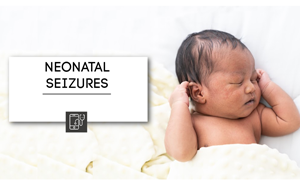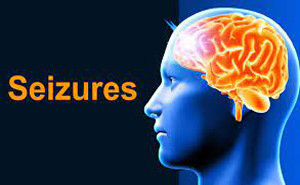Featured
PubMed: September 2023Seizures are common in neonates, but there is substantial
management variability. The Neonatal Task Force of the International League
Against Epilepsy (ILAE) developed evidence-based recommendations about
antiseizure medication (ASM) management in neonates in accordance with ILAE
standards. Seizures are the most common neu...
Discontinuation of antiepileptic
drugs (AEDs) in seizure-free patients is an important goal because of possible
long-term side effects and the social stigma burden of epilepsy. The purpose of this study was to
assess seizure recurrence risk after suspension of AEDs, to evaluate predictors
for recurrence, and to investigate the recovery of seizu...
Seizures are the most common
manifestation of neurological insult during the neonatal period. The most common
cause of symptomatic neonatal seizures is hypoxic/ischemic encephalopathy (HIE)
which affects approximately 1-2/100 live births.There are no evidence-based
guidelines for the pharmacologic treatment of neonatal seizures and management...
The New England Journal of Medicine: Published on December, 2019Evidence supports the use of
benzodiazepines as the initial treatment for status epilepticus; however,
seizures do not respond to benzodiazepines in up to a third of patients. Of the three medications most
commonly used to treat benzodiazepine-refractory status epilepticus —
leveti...
Gliomas are the most common malignant primary brain tumors
and treatment options are multimodal. Seizures are a well-recognized
symptom in glioma patients and occur frequently, either as a presenting symptom
or during the course of the disease. The incidence of seizures is higher
in slow-growing tumors.Seizure control plays an important role in...
PubMed Central: Published on October 2019
Status epilepticus is most common
in children younger than 5 years, with incidence between 10 and 60 per 100,000
populations.
Convulsive status for 30 min leads
to irreversible neuronal injury.
TAKE HOME MESSAGE
Established Status Epilepticus
Treatment Trial proposed that 35%–45% of p...
American Epilepsy Society issues
guideline and treatment algorithm for convulsive status epilepticus. The
guideline was endorsed by the Epilepsy Foundation, Child Neurology Society, and
American College of Emergency Physicians.Status epilepticus – continuous or rapid sequential seizure activity for
30 minutes or more – is a medical emergency wi...
JAMA: The Journal of the American Medical Association: Published
on April 5, 2022
Epilepsy affects approximately 65
million people worldwide. Persistent seizures are associated with a 20% to 40%
risk of bodily injuries (eg, fractures, burns, concussions) over 12-month
follow-up. The primary goal of epilepsy treatment is to eliminate seiz...
The New England Journal
of Medicine (NEJM): Published
on July 15, 2021
The incidence rate of a single unprovoked seizure among
adults is 23 to 61 cases per 100,000 person-years.
After a first unprovoked seizure, the overall risk of
recurrence may be as high as 60%, and this risk is highest within the first 2
years.
Epilepsy is...
TAKE-HOME MESSAGE
A systematic review of the literature published
between January 1991 and March 2020 was used to update the 1996 American
Academy of Neurology practice parameter that provided considerations for
discontinuing antiseizure medications in affected patients.
The authors of this update developed 14
reco...









